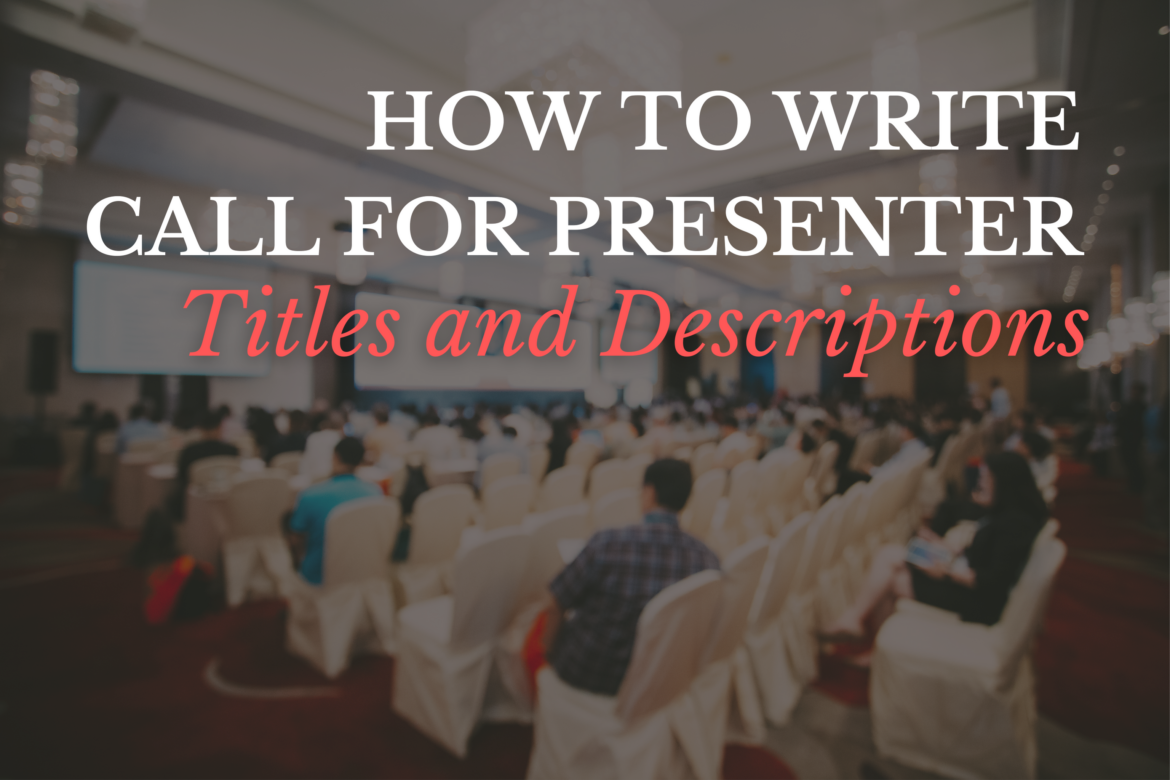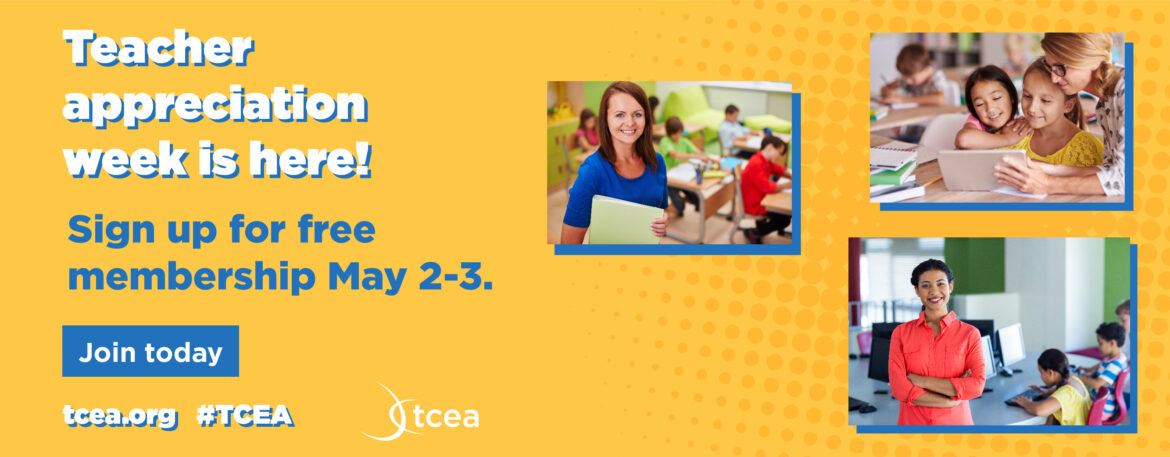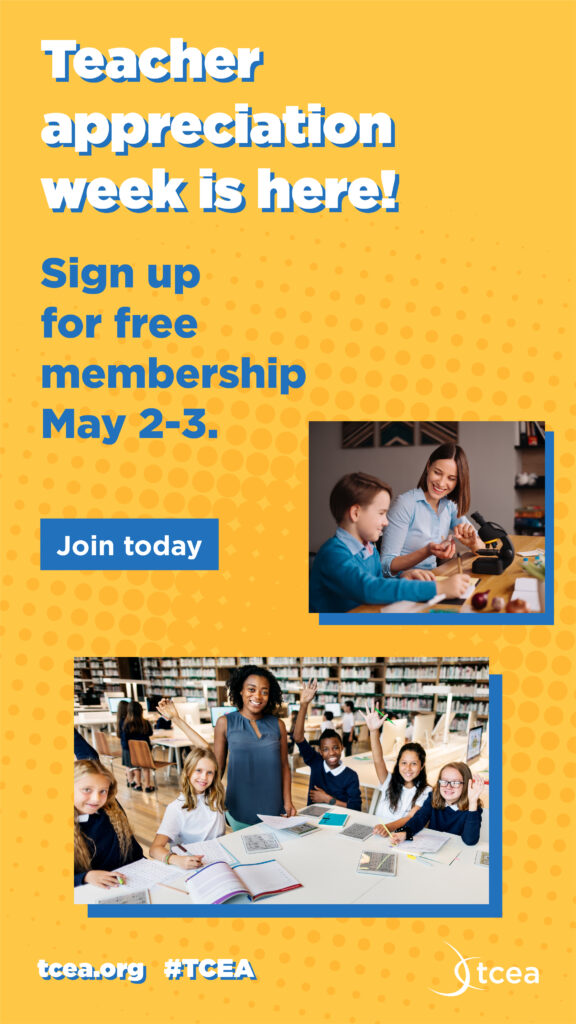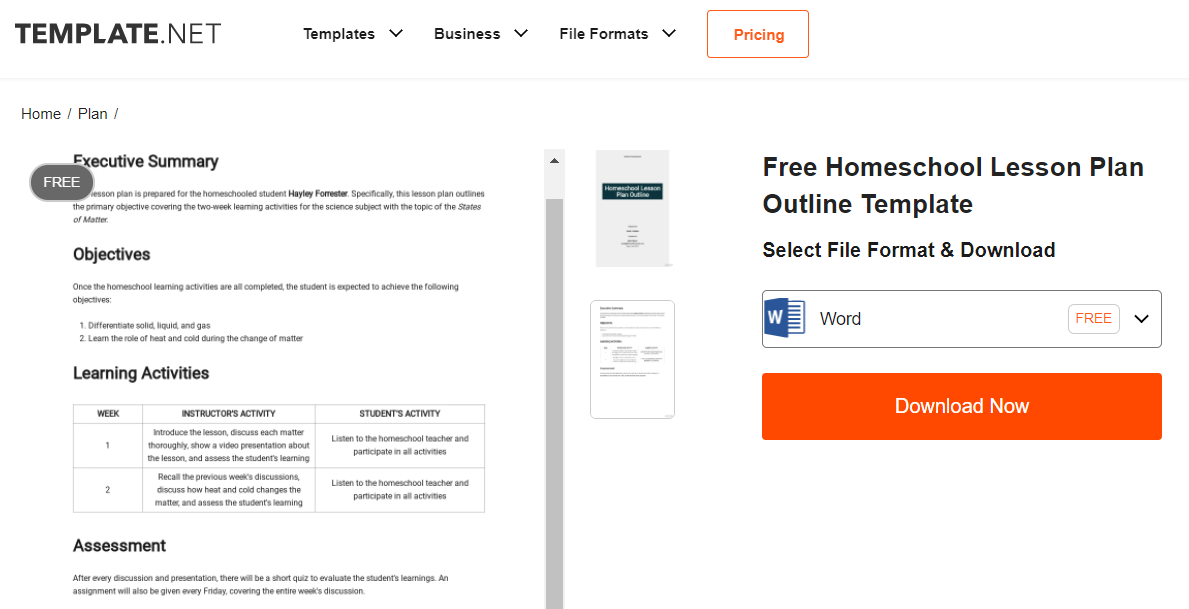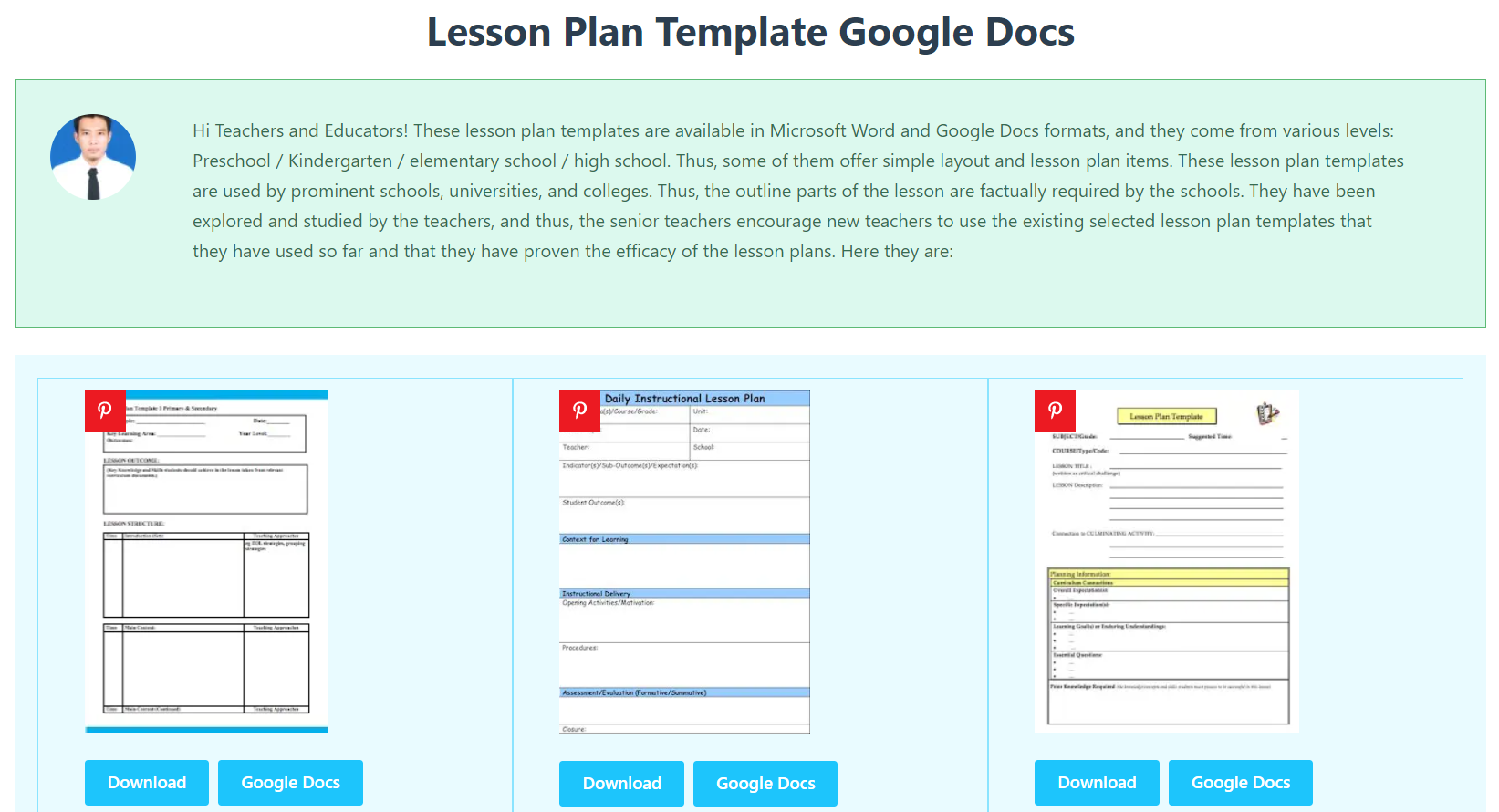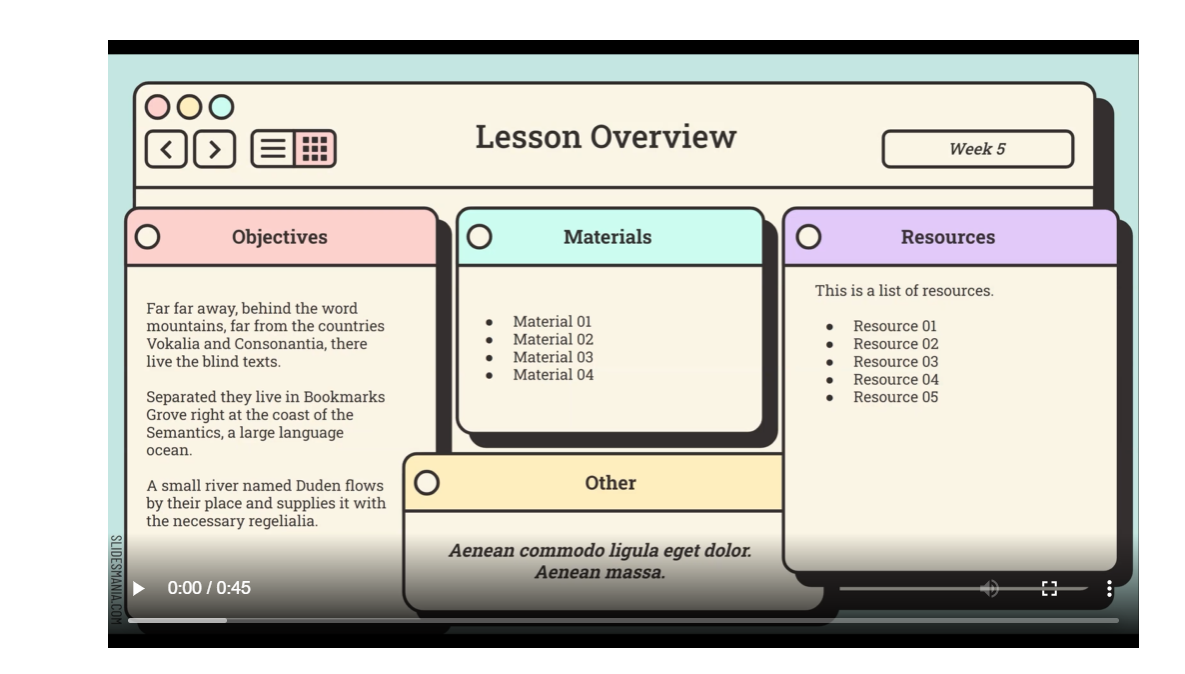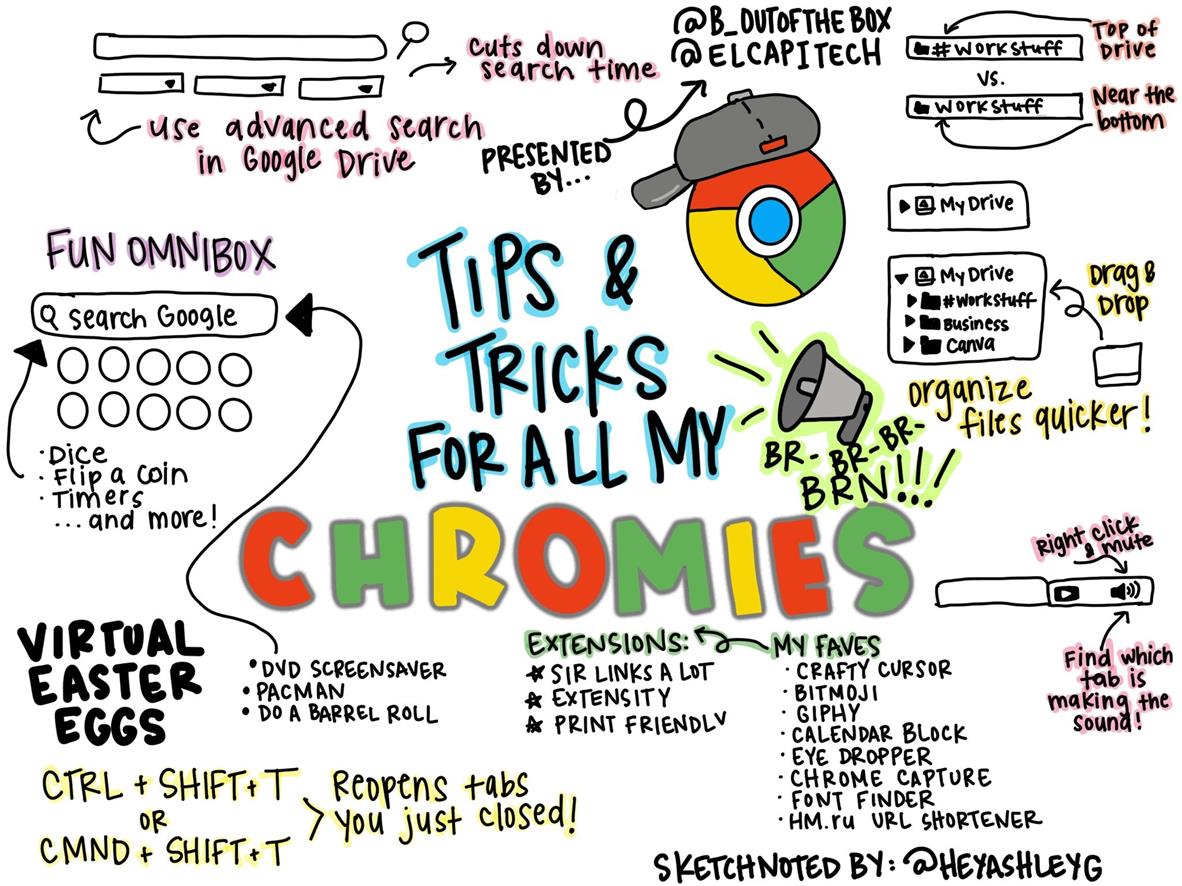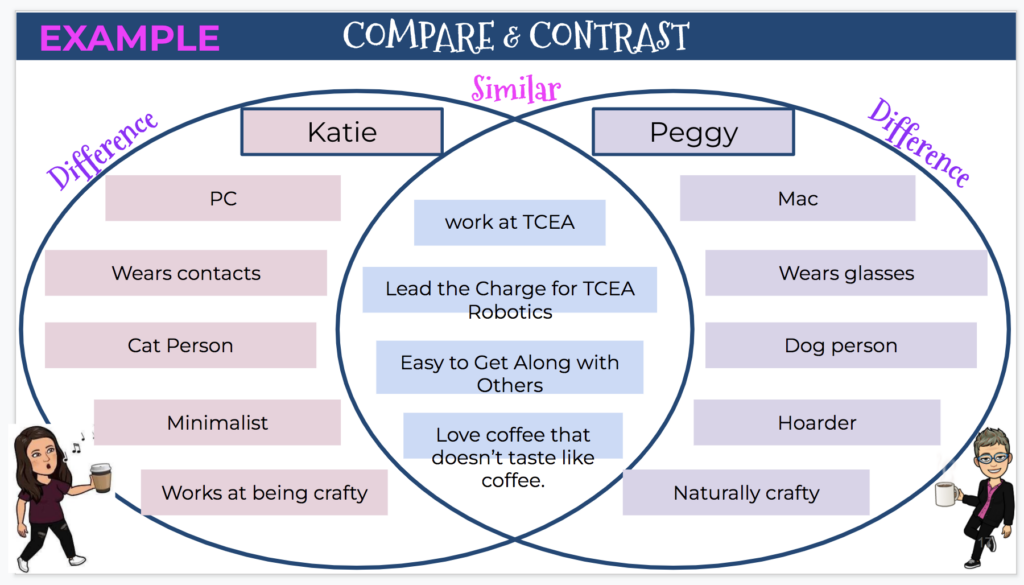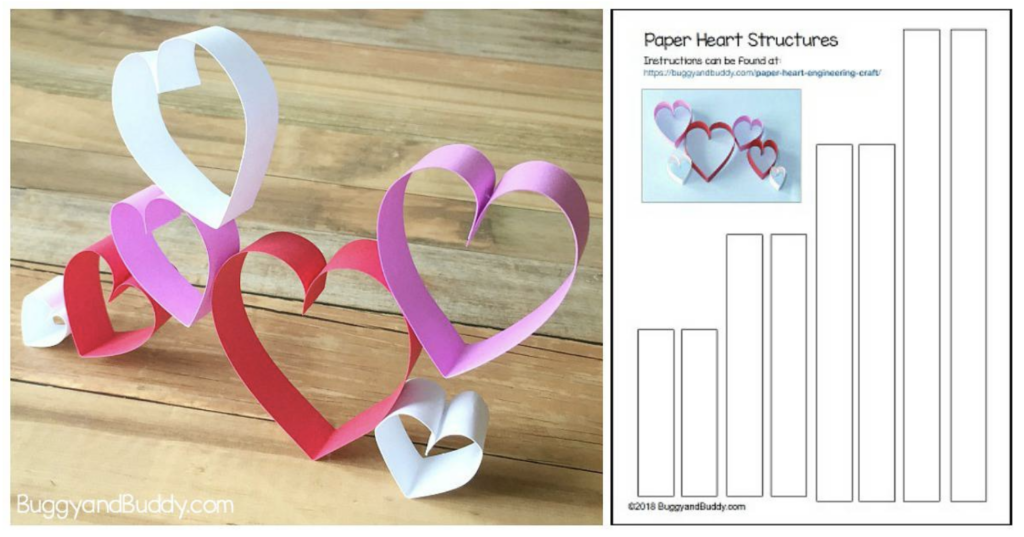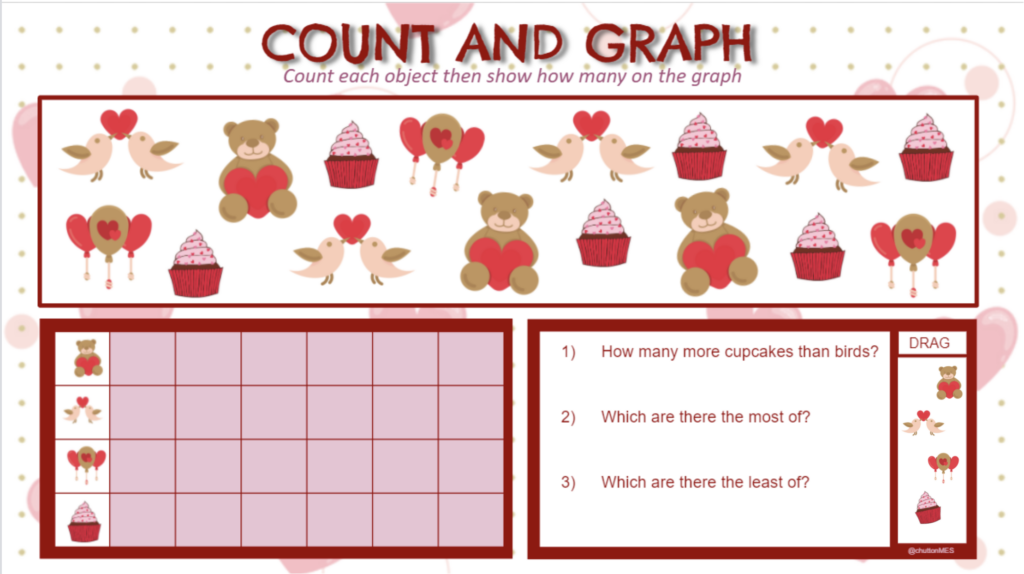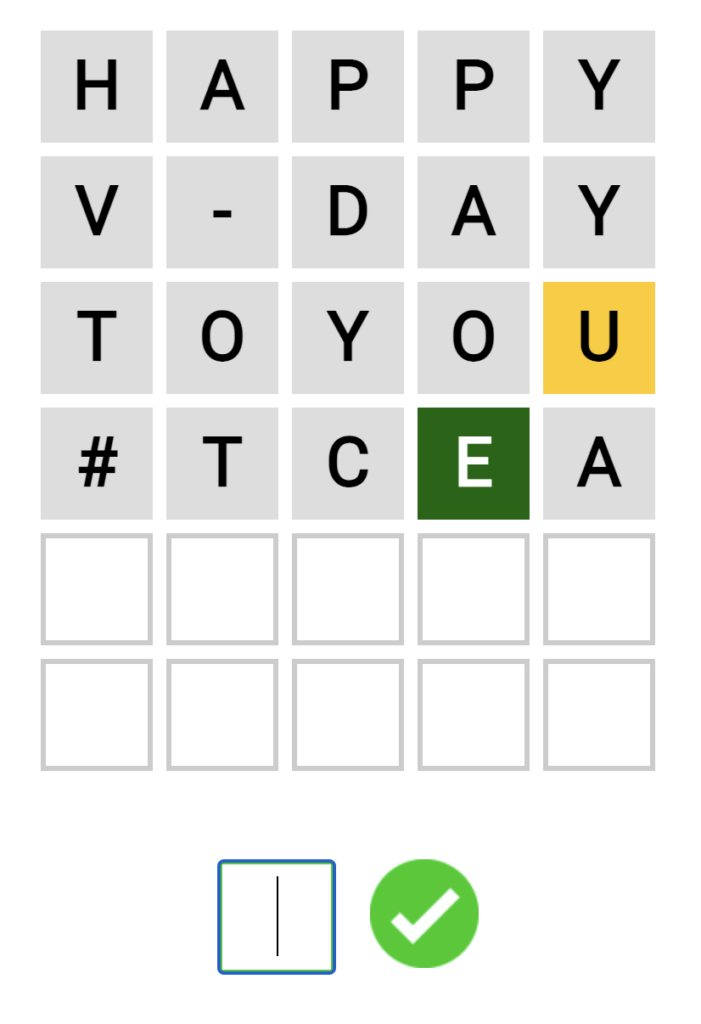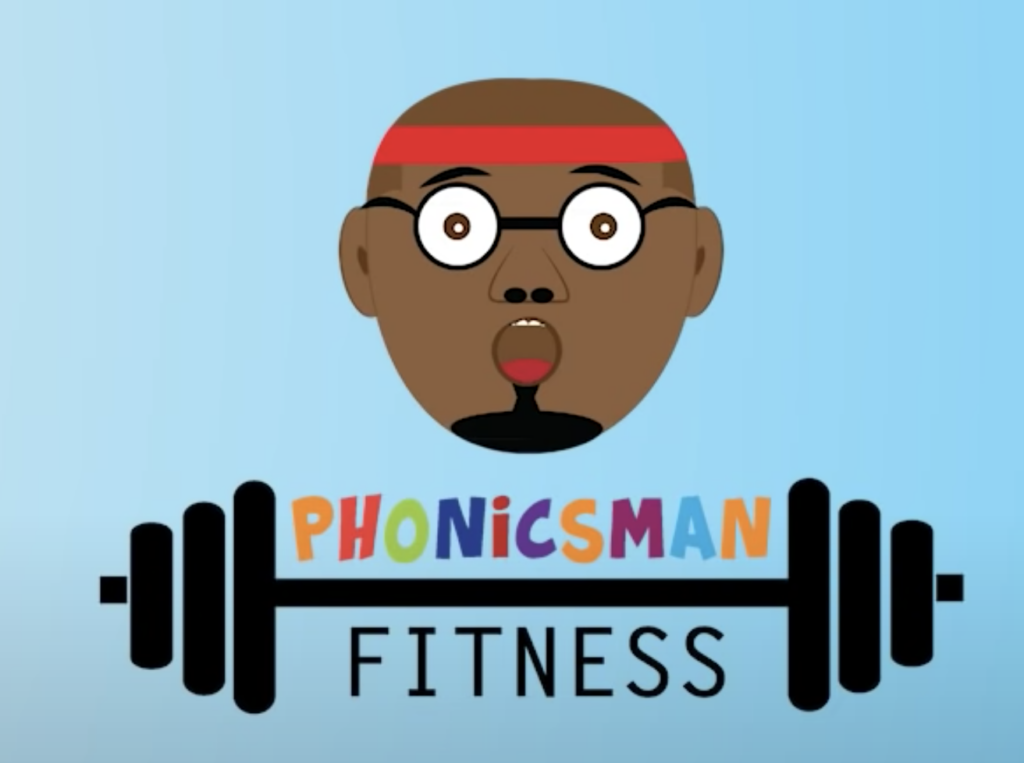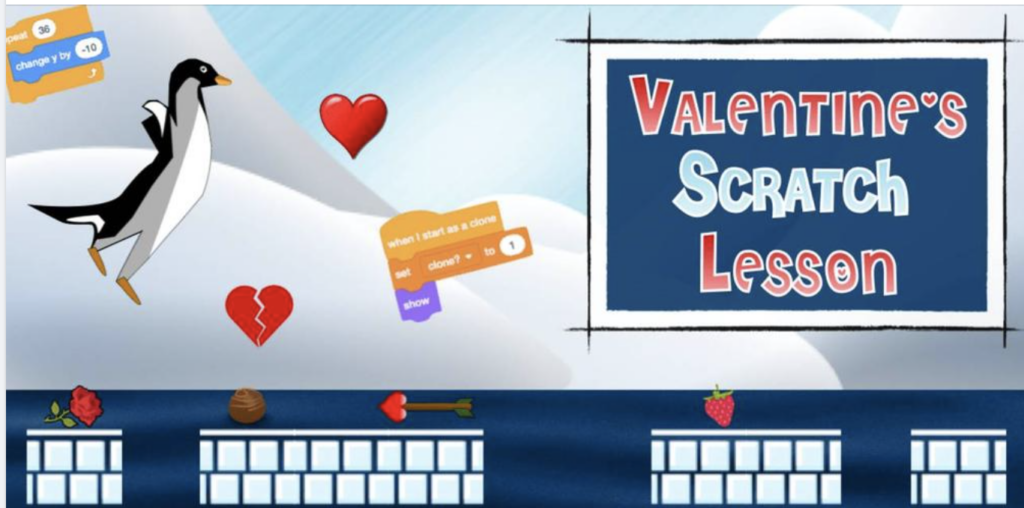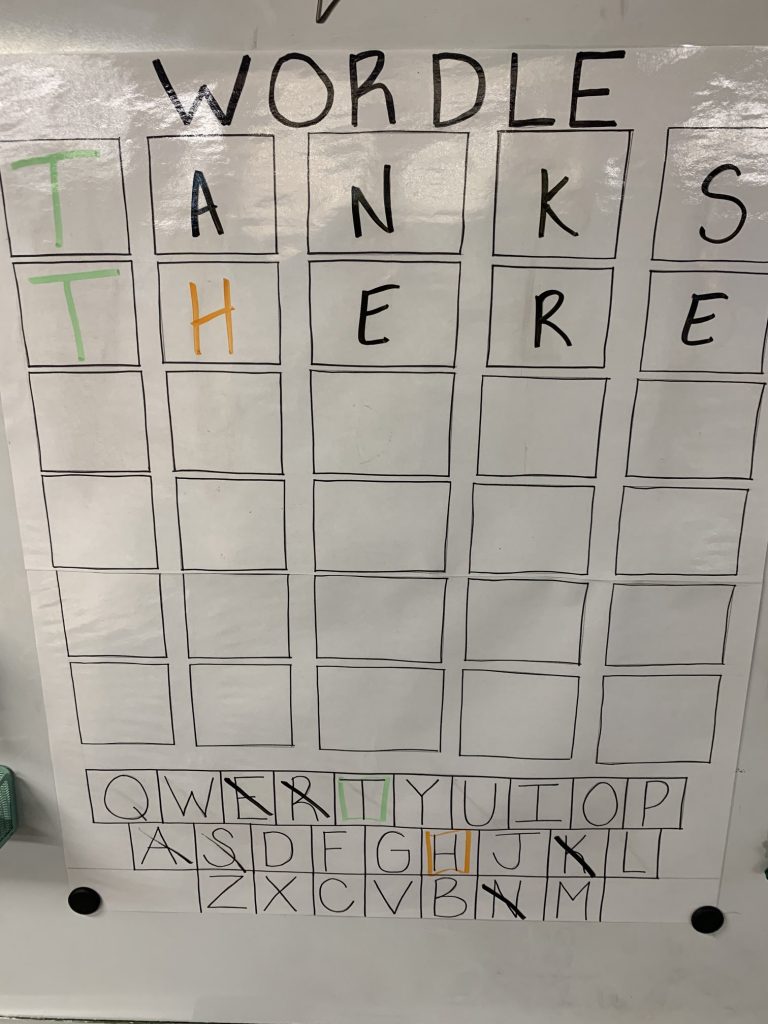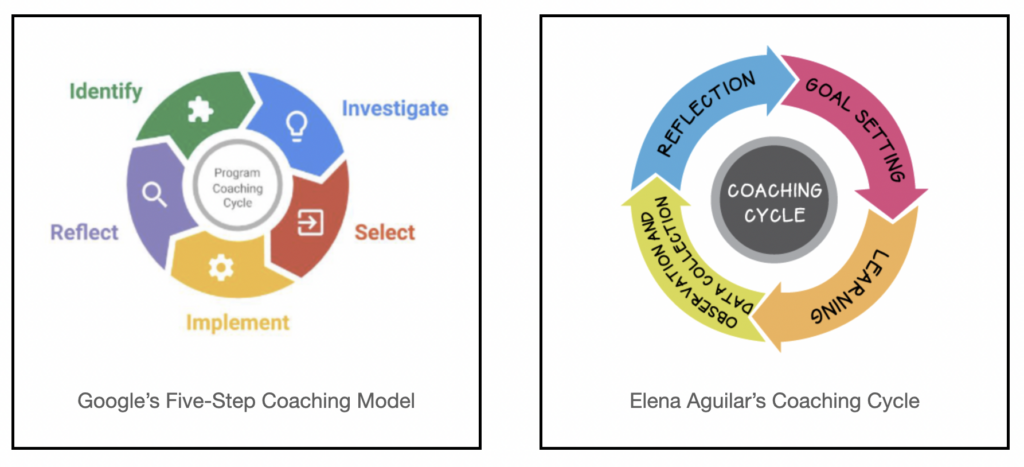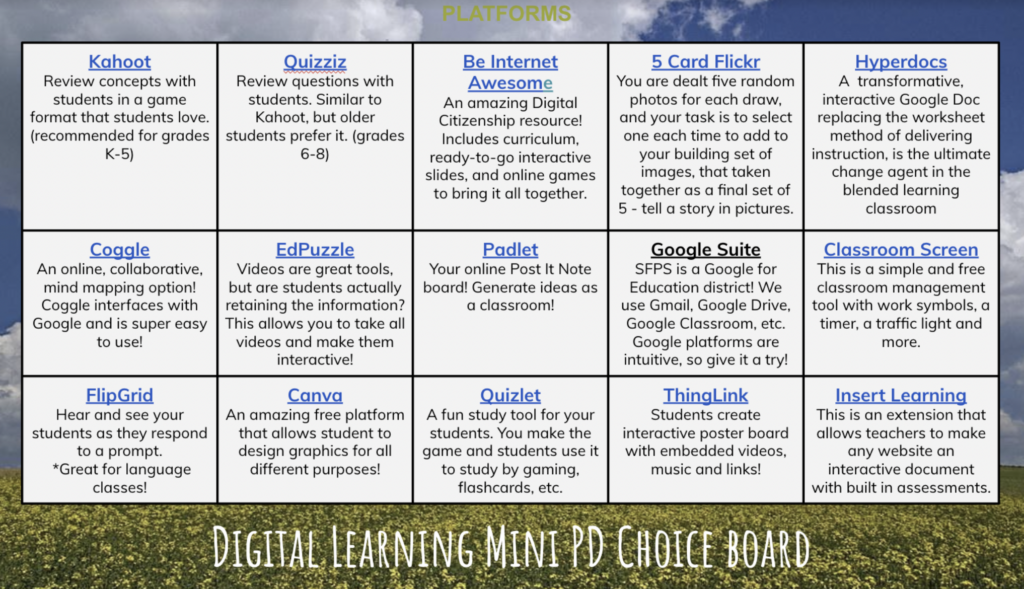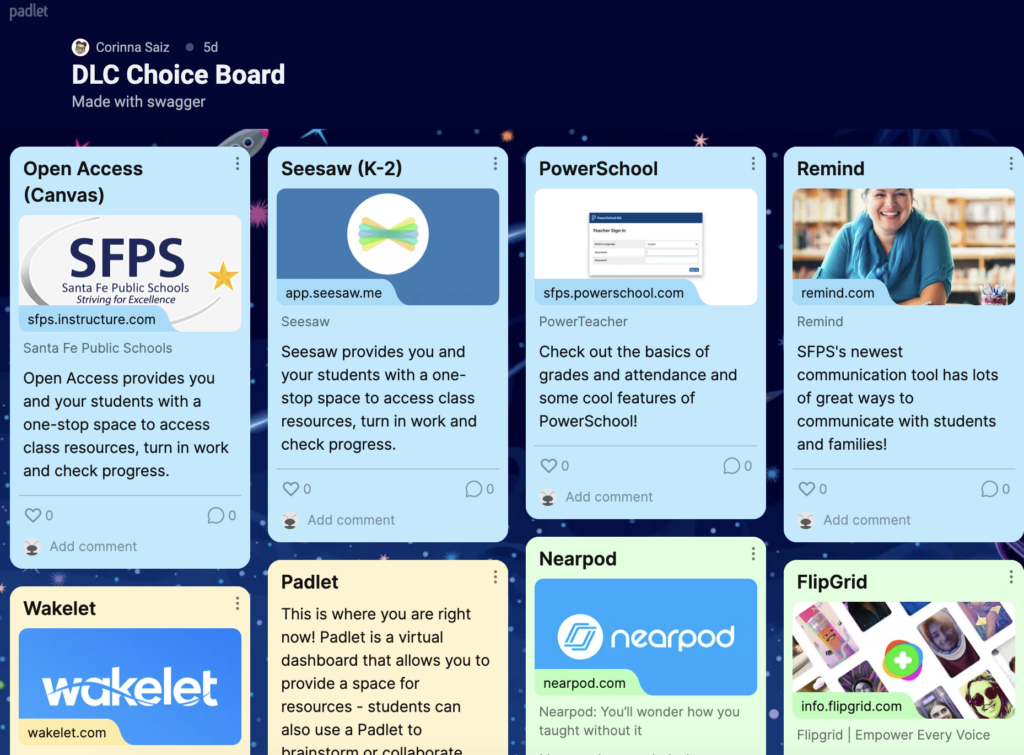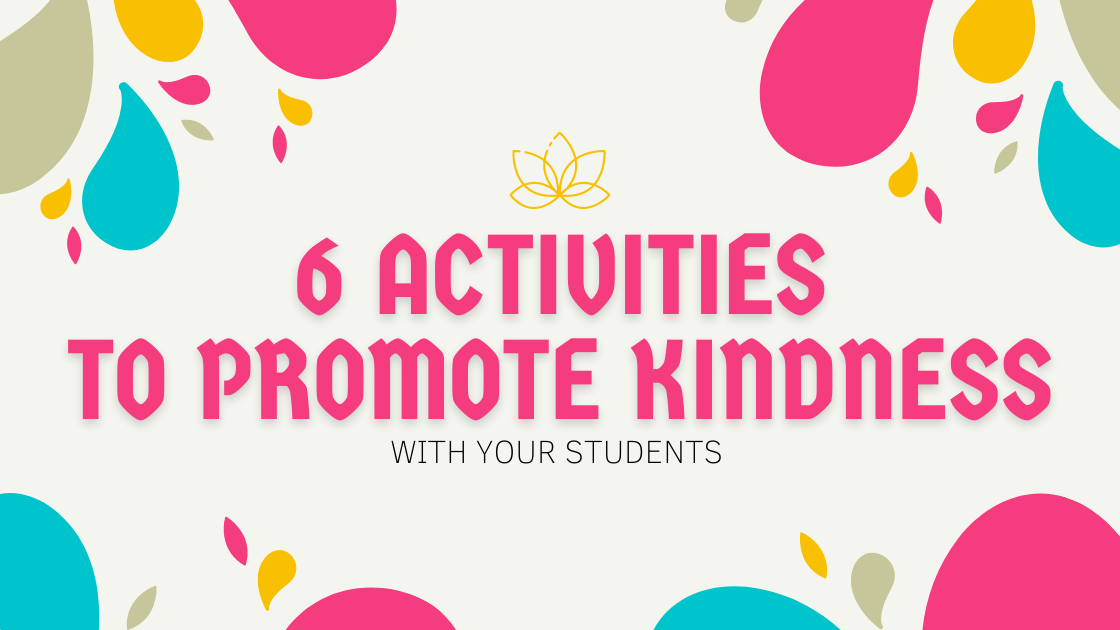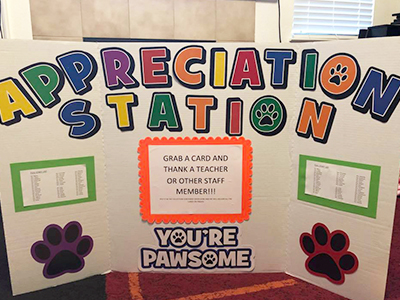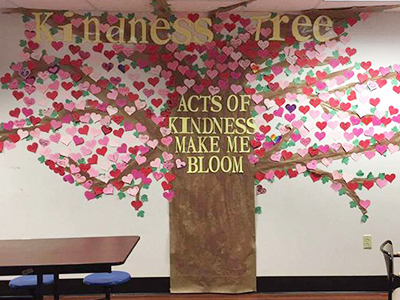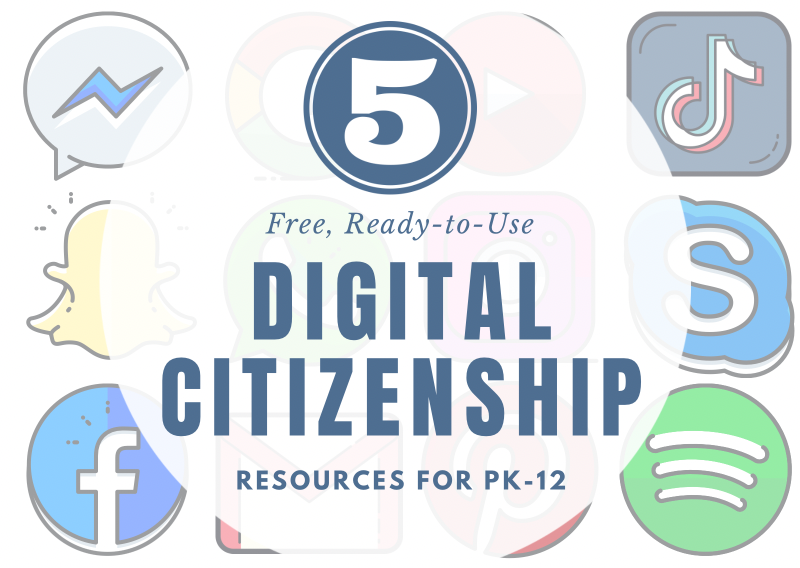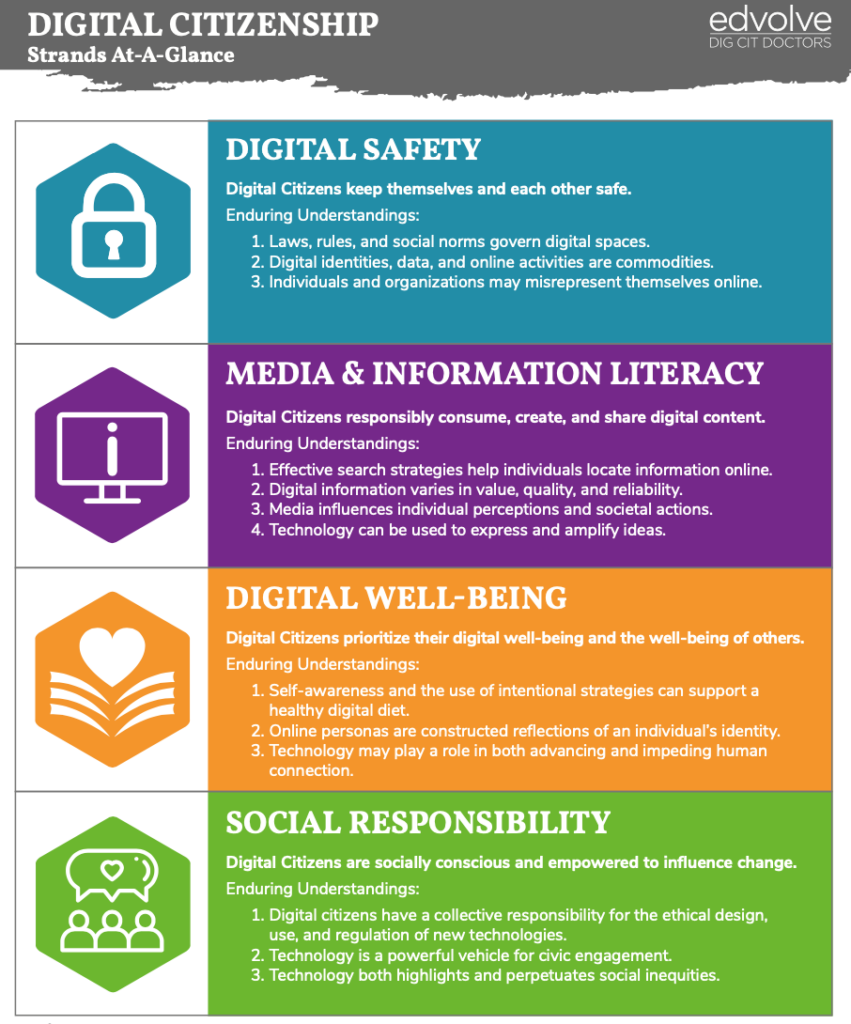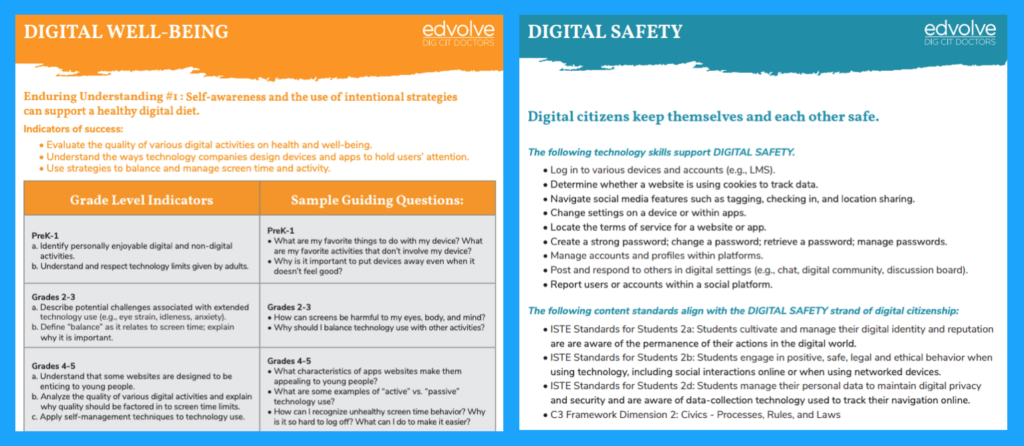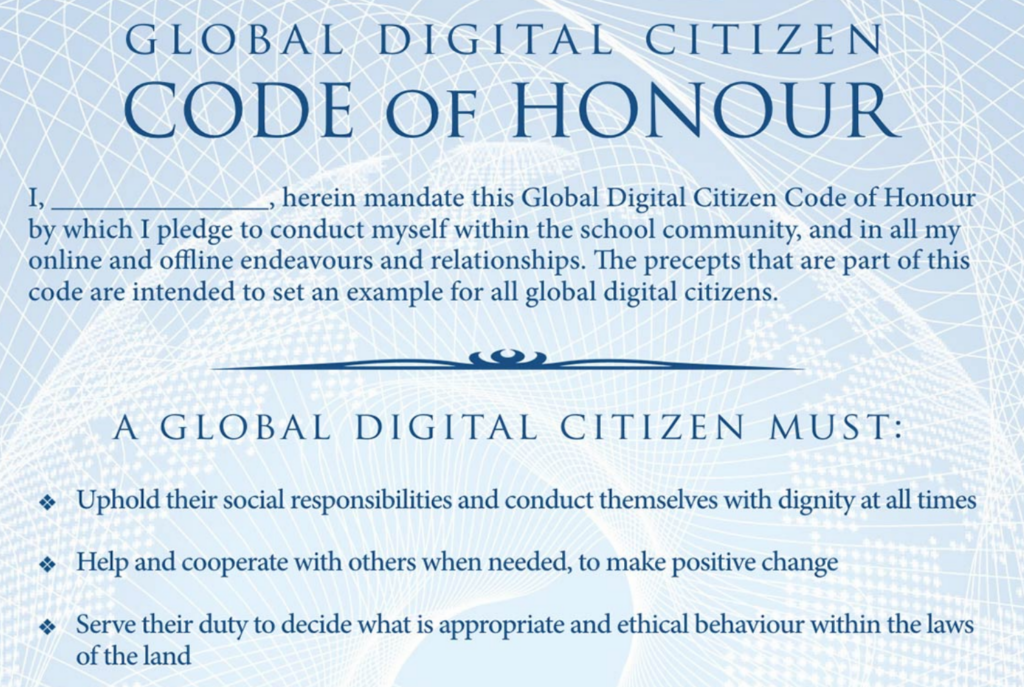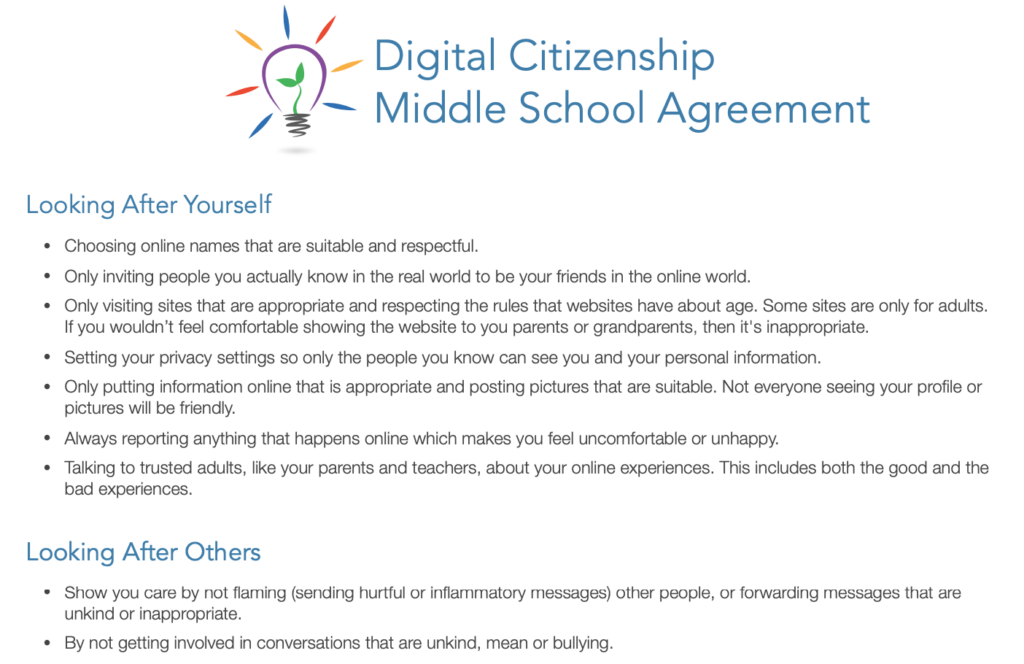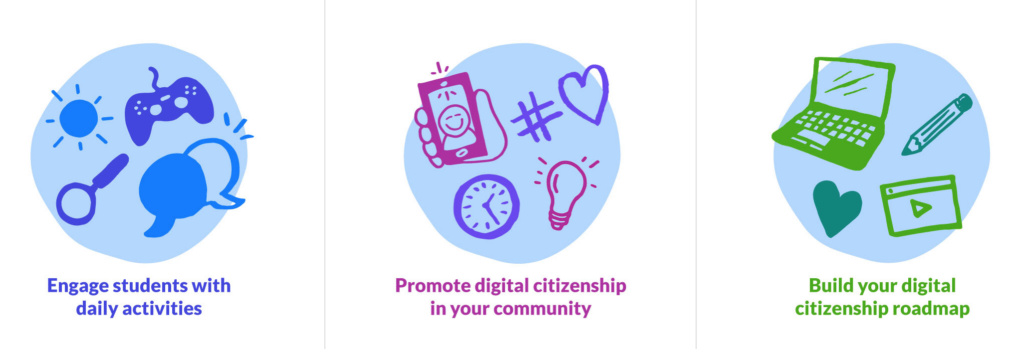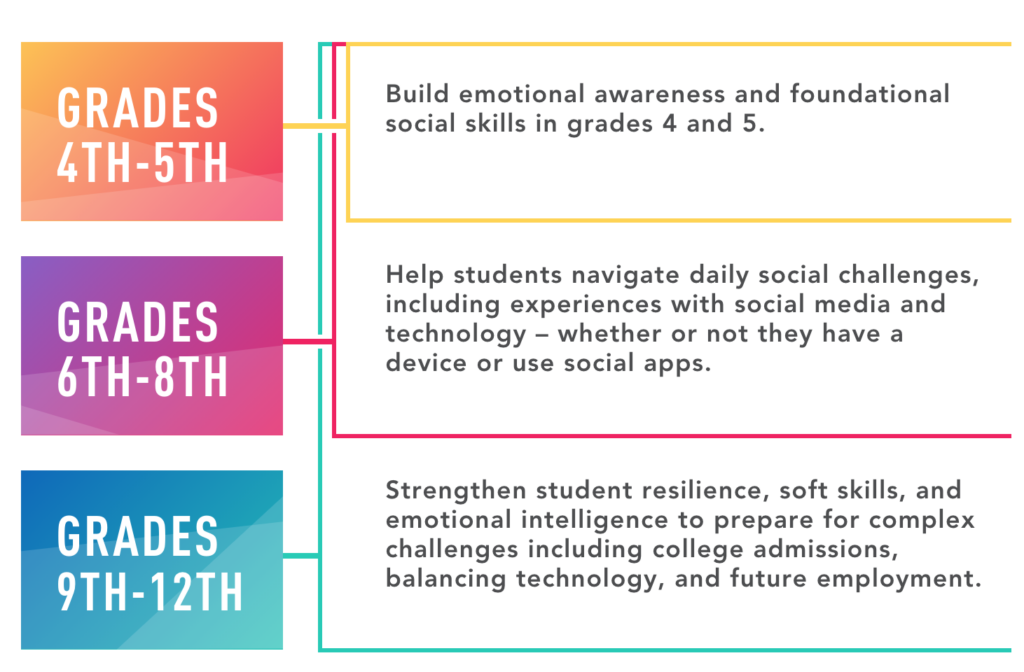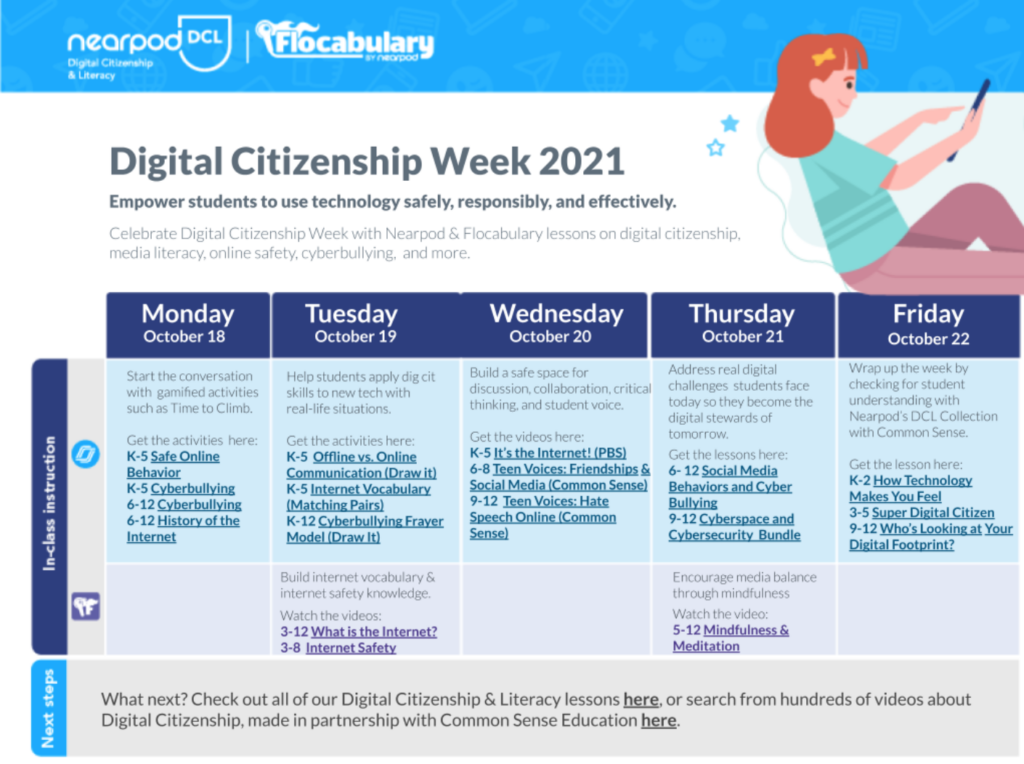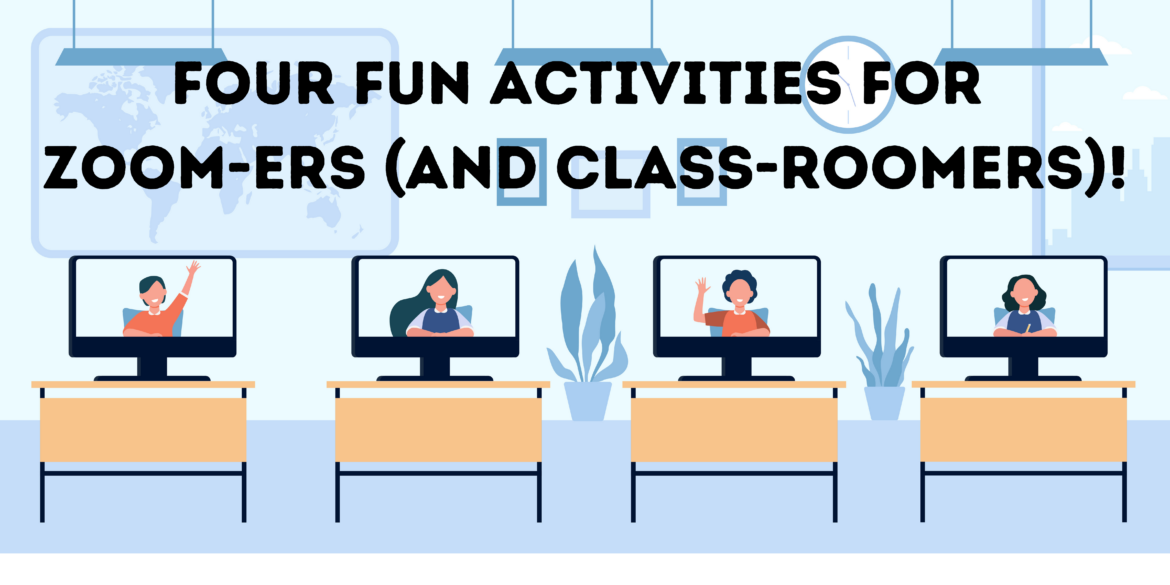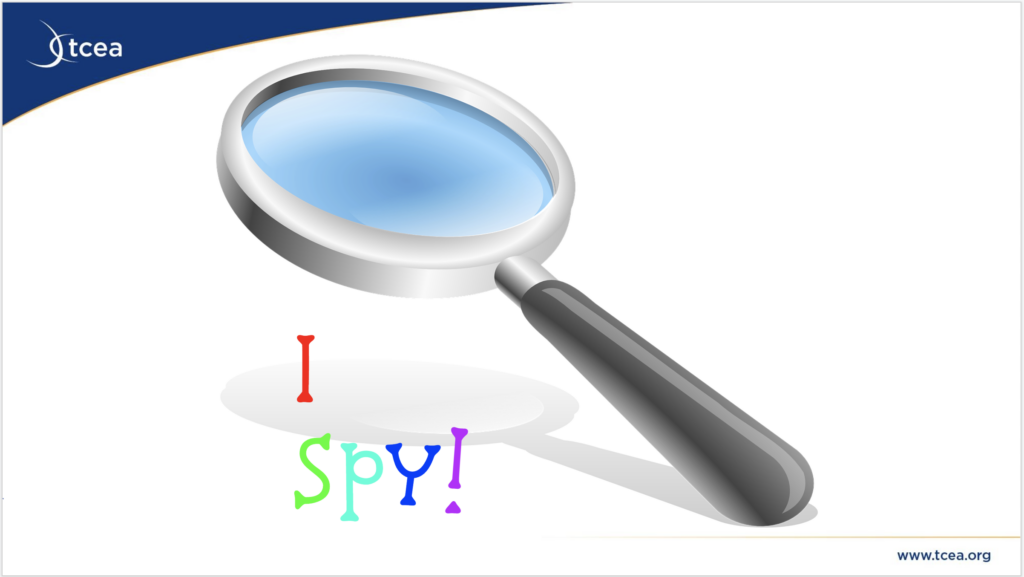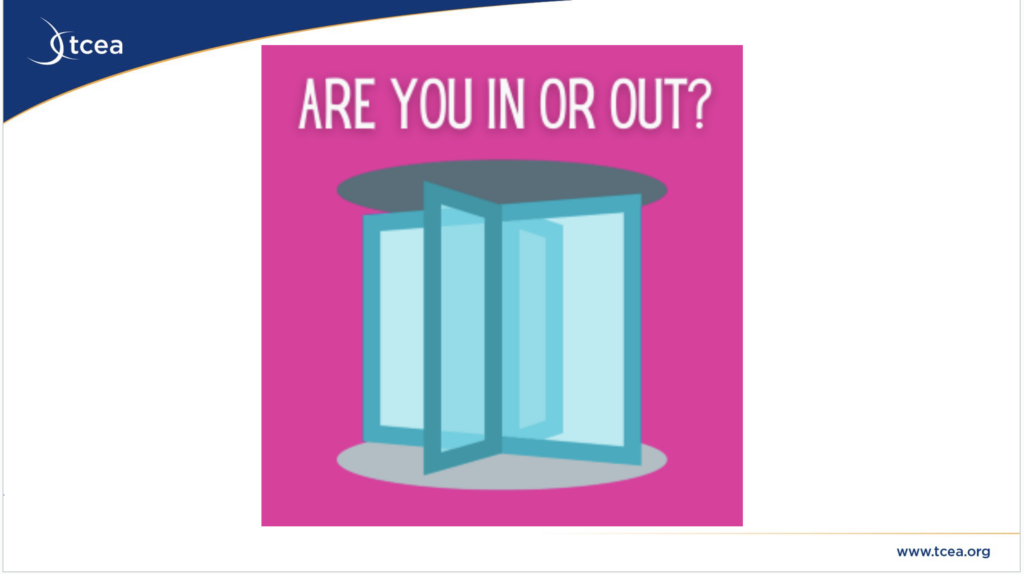If you’re into presenting at conferences and conventions, you know that the first step is the proposal or submission of your presentation, session, or workshop. An important part of the “Call for Presenters” process is pitching your session with a title and short and long description (among other things). Not only do the title and descriptions influence those making the selections, but they also highly impact attendance. Let’s talk about how to write amazing titles that lead people to read your description. And then, let’s take a look at how to write a concise but also interesting and informative description so that attendees don’t want to miss your session.
Four Tips for Writing “Attention-Grabbing” Titles
Did you know that only about two out of 10 people will move on to read your description after seeing your title or headline? It’s true. That’s one reason why writing a fantastic title is so important. You want to make the reader think, “That sounds interesting– like it could directly benefit me. I want to know more!” Here are some tips:
1. Keep it short. Six to 10 words or less with a maximum of 70 characters (ideally 50 characters or less) will do the trick for your title.
2. Use proper writing style. At TCEA, we use AP Style. So you can use a tool like this one to help you with title case capitalization rules. Another important rule for TCEA’s style guide (and many other conferences) is spelling out the word “and” instead of using the ampersand (&). Additionally, we do not capitalize “to” or “with” in a title. And we write out numbers one through nine unless you’re referring to grade levels (grade 1, 1st grade, etc.).
3. It’s all about the details! In the title, include information about what tool(s) will be explored or highlighted (e.g., Jamboard), what the result of the session will be (e.g., successful differentiation), and what attendees can expect to walk away with (e.g., templates, tips, and tricks). So, an example would be “Jamboard Templates and Tricks for Differentiation Domination.” The reader gets so much information from just a few words. If you can highlight the targeted audience in the title, that’s great, too (e.g., K-5 Jamboard Templates for Differentiation Domination).
4. Make it stand out. Use power verbs and adjectives, make it funny (or punny, if appropriate), and incorporate unique words to make it pop. Saying “Jamboard Templates and Tricks for Differentiation Domination” is more interesting and gives more information than saying “Using Jamboard for Differentiation,” for example.
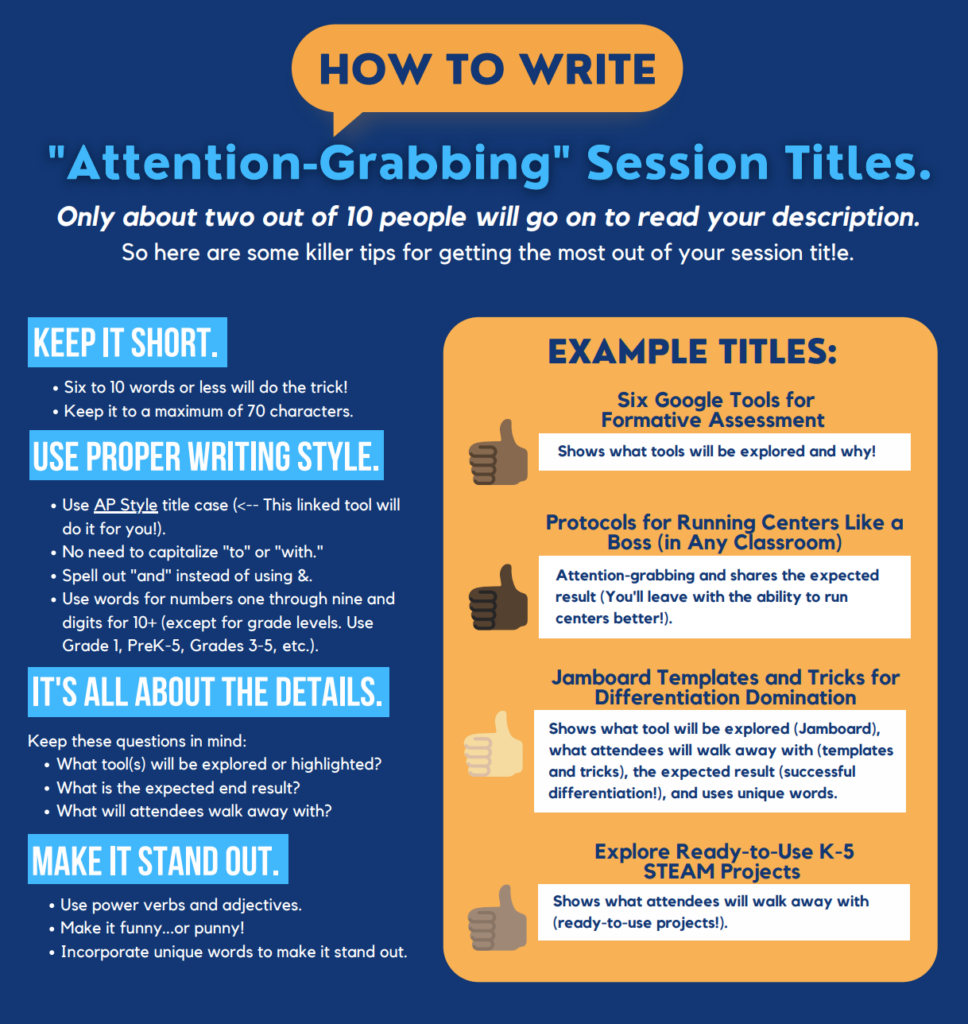
Four Tips for Writing “Must-Attend” Session Descriptions
Ok, so your title is written, and you’re feeling great (as you should). Now you’re ready to tackle the descriptions. The big attendee question to answer with your descriptions is, “What’s in it for me?” Essentially, the reader should know how attending your session, presentation, or workshop will directly benefit them. These tips are similar to the title tips, but they are expanded a bit. Here we go!
1. Keep it short. For TCEA, short descriptions should be 30 words maximum, and long descriptions should be 75 words maximum. It’s not easy to get everything in these descriptions. But you can definitely get those important details in there to leave readers wanting to attend your session.
2. Use proper writing style. The style guide information listed in the title tips above also applies to descriptions. Read, reread, edit, and revise your descriptions– then repeat. We follow AP style, and if you’re not sure of a rule, Google it! I’d also recommend using a grammar and spell check tool.
3. Focus on the benefits. Target your audience by calling them out in the description or title if you can (e.g., Five Comprehension Strategies Proven to Boost K-5 Reading Outcomes). Focus on the results and explain outright what attendees will be able to do after the session and how that will directly and positively impact their work/life. Also, describe what attendees will do during the sessions, and be honest about your presentation. Set clear expectations.
4. Make it interesting. Attendees and reviewers will be looking at lots of descriptions, so make yours stand out by using action verbs, active voice, and good adjectives. Skip out on phrases like “In this session” and “Come to this session.” Use your words to describe and hook instead. The reader knows this is a presentation/session/workshop, so no need to mention that. Talk directly to the reader in a personal way by using “your” and “you” instead of using “attendees” and “participants.”
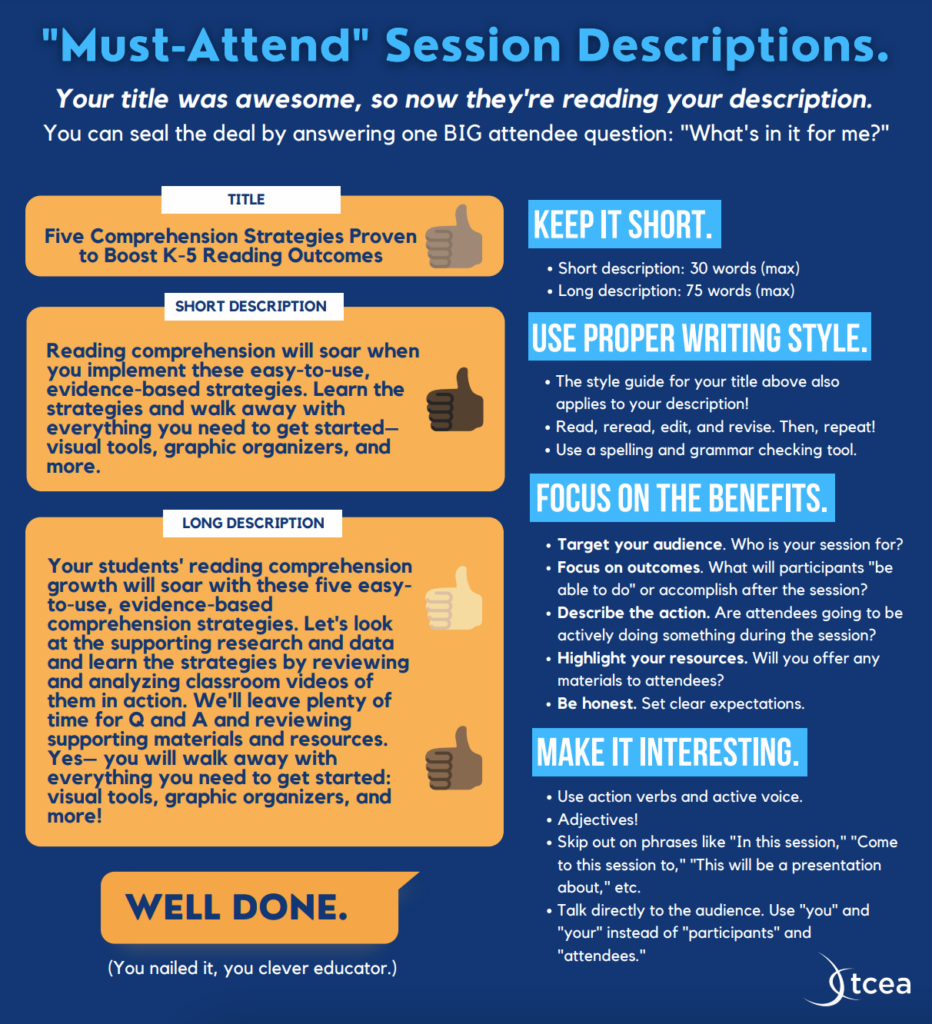
Current TCEA Calls for Presenters
Conference for Educational Coaching (CEC)
CEC, formerly known as Campus Technology Specialist Academy (CTSA), is designed exclusively for those in digital learning, coaching, technology integration, and similar roles. If you’re supporting educators in your workplace through coaching, offering professional development, or something similar, you should share what’s working for you and submit a presentation. Your peers would love to hear what you’re up to. The call for presenters is open through July 24, and the event will be held October 12-13.
System Administrator and Technical Support Conference (SysAdmin)
SysAdmin is specifically designed to offer powerful, practical information to the individuals who provide hardware, software, network, and infrastructure support in PreK-16 settings. If you work in any of these areas and could support others by sharing your knowledge and experience, submit a presentation. You’d be great. The call for presenters is open through July 21, and the event will be held November 3-4.
These events will be in Austin, TX at TCEA’s Conference Center, and if you are selected as a primary presenter of two or more sessions, you qualify for free registration!
I hope you found this information beneficial as your prepare to submit presentations for all the conferences and conventions you’re hoping to present at this year. Have additional tips? Comment below!

